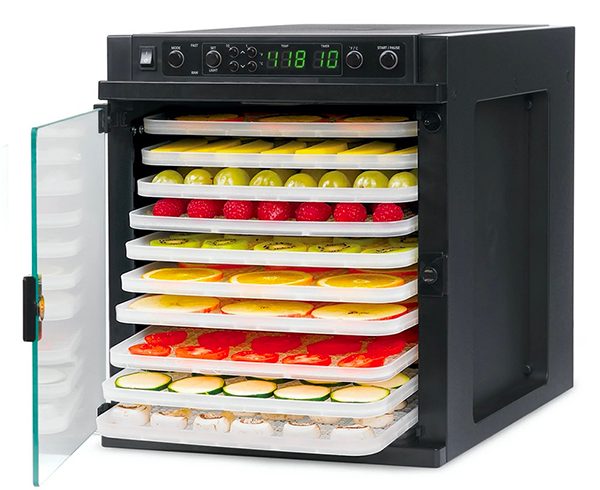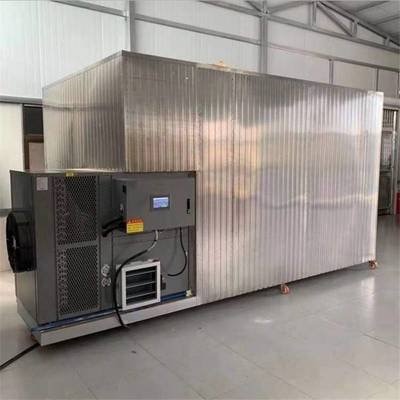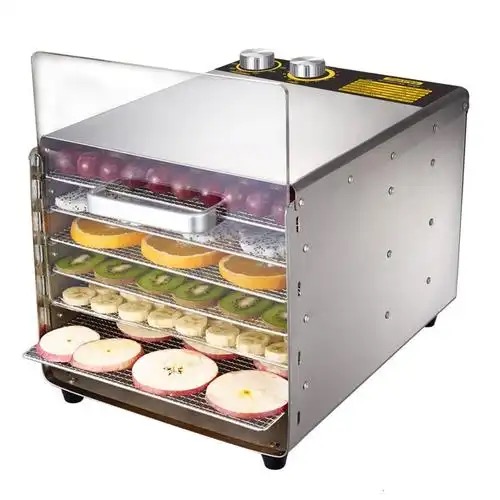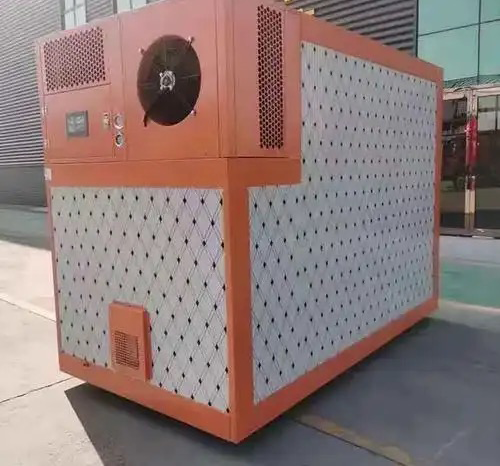
Content Menu
● Understanding Food Dehydration
>> How Do Dehydrators Work?
● Heat Pump Dryers vs. Normal Dryers
>> Heat Pump Dryers
>> Normal Dryers
● Comparative Analysis
● Advantages of Using Heat Pump Dryers
● Disadvantages of Heat Pump Dryers
● Applications in Food Processing
● Detailed Analysis of Food Types Suitable for Dehydration
>> Fruits
>> Vegetables
>> Herbs
>> Meat Products
● Innovations in Heat Pump Technology
● Environmental Impact Considerations
● Conclusion
● FAQ
>> 1. What foods can be dried using a heat pump dryer?
>> 2. How does a heat pump dryer preserve nutrients better than a normal dryer?
>> 3. Are heat pump dryers suitable for home use?
>> 4. What is the typical lifespan of a heat pump dryer?
>> 5. Can I use a heat pump dryer for commercial purposes?
In the world of food preservation, dehydrators play a crucial role in extending the shelf life of various food products. Among the different types of dehydrators, heat pump dryers and conventional dryers stand out due to their unique operational mechanisms and benefits. This article will explore the differences between heat pump dryers and normal dryers, focusing on their functionalities, advantages, and applications in food processing.

Understanding Food Dehydration
Food dehydration is a method used to remove moisture from food to inhibit the growth of microorganisms and enzymes that cause spoilage. The process not only preserves food but also intensifies flavors and retains nutritional value. Dehydrators achieve this by circulating warm air around the food at controlled temperatures.
How Do Dehydrators Work?
- Heat Source: Dehydrators utilize a heating element to raise the temperature inside the unit, essential for drawing moisture from food.
- Airflow: A fan circulates warm air evenly throughout the dehydrator, ensuring uniform drying and preventing spoilage.
- Trays: Food is placed on racks or trays that allow air to circulate freely, facilitating even dehydration.
- Temperature Control: Most modern dehydrators feature adjustable temperature settings, allowing users to customize the drying process based on food type.
Heat Pump Dryers vs. Normal Dryers
The main difference between heat pump dryers and conventional dryers lies in their drying mechanisms and energy efficiency.
Heat Pump Dryers
Heat pump dryers use advanced technology to recycle air within a closed system. The process involves:
1. Heating Air: Ambient air is drawn into the system and heated.
2. Drying Process: The heated air is circulated through the food, removing moisture.
3. Cooling and Condensation: After passing through the food, the moisture-laden air is cooled, causing water vapor to condense. This water is then removed from the system.
4. Recycling Air: The dry air is reheated and cycled back into the drying chamber.
This method allows for lower operational temperatures (typically between 30°C to 75°C), which helps preserve nutrients and flavors better than conventional methods.
Normal Dryers
Conventional dryers operate by blowing hot air through food items and venting moist air outside. Their characteristics include:
- Higher Temperatures: Normal dryers typically operate at higher temperatures, which can lead to faster drying times but may also result in nutrient loss.
- Less Energy Efficiency: They consume more energy since they continuously draw in new air and vent out moist air rather than recycling it.

Comparative Analysis
| Feature | Heat Pump Dryer | Normal Dryer |
| Energy Efficiency | Highly efficient; uses less energy | Less efficient; higher energy consumption |
| Drying Temperature | Lower temperatures (30°C - 75°C) | Higher temperatures (up to 200°C) |
| Nutrient Preservation | Better preservation of nutrients | Possible nutrient loss due to high heat |
| Initial Cost | Higher initial investment | Generally lower initial cost |
| Drying Time | Longer drying times | Faster drying times |
Advantages of Using Heat Pump Dryers
1. Energy Efficiency: Heat pump dryers can use less than half the energy of traditional dryers due to their recycling mechanism.
2. Nutrient Retention: The lower drying temperatures help maintain the nutritional integrity of foods, making them ideal for preserving fruits, vegetables, and herbs.
3. Versatility: These dryers can handle a wide variety of foods, including delicate items that might be damaged by higher heat.
4. Environmentally Friendly: Reduced energy consumption translates to a smaller carbon footprint.
5. Cost Savings Over Time: Although they require a higher initial investment, lower operating costs can lead to significant savings in the long run.
Disadvantages of Heat Pump Dryers
1. Higher Initial Investment: The advanced technology involved means that heat pump dryers are generally more expensive upfront compared to conventional models.
2. Longer Drying Times: Due to their lower operating temperatures, heat pump dryers may take longer to complete the drying process compared to normal dryers.
Applications in Food Processing
Heat pump dryers are increasingly being adopted in commercial food processing due to their efficiency and ability to preserve quality:
- Fruits and Vegetables: Ideal for drying delicate fruits without compromising flavor or nutrients.
- Herbs and Spices: Maintains essential oils and flavors, making them perfect for culinary uses.
- Meat Products: Used for jerky production while ensuring safety through effective moisture removal.
- Snack Foods: Perfect for creating healthy snacks like fruit leathers or vegetable chips.
Detailed Analysis of Food Types Suitable for Dehydration
Different types of foods respond uniquely to dehydration processes. Here's an overview of how various categories fare with heat pump dryers versus normal dryers:
Fruits
Fruits such as apples, bananas, mangoes, and berries are commonly dehydrated. Heat pump dryers excel here because they prevent browning and retain vibrant colors due to lower temperatures. Normal dryers may cause fruits to lose their bright appearance and some nutritional value due to higher heat exposure.
Vegetables
Vegetables like carrots, bell peppers, and tomatoes can be dried effectively using either method; however, heat pump dryers are preferred for maintaining flavor profiles. They allow for gentle drying that preserves essential vitamins like Vitamin C that are often lost in high-temperature environments typical of normal dryers.
Herbs
Herbs such as basil, thyme, and parsley benefit significantly from heat pump drying as it preserves their volatile oils responsible for aroma and taste. Conventional methods can lead to significant loss of these oils due to high temperatures.
Meat Products
When it comes to meat products like jerky or dried fish, both types of dryers can be used effectively; however, safety is paramount. Heat pump dryers ensure that moisture is removed efficiently while maintaining safe temperatures that reduce bacterial growth risk during dehydration.
Innovations in Heat Pump Technology
The evolution of heat pump technology has led to several innovations that enhance performance:
- Smart Controls: Modern heat pump dryers come equipped with smart technology that allows users to monitor drying progress remotely via smartphone apps. This feature provides convenience as users can adjust settings without being physically present.
- Multi-Layer Drying Racks: Some models now feature multi-layer racks that maximize space usage while ensuring even airflow around all items being dried. This innovation increases efficiency by allowing larger batches without compromising quality.
- Energy Recovery Systems: Advanced models incorporate energy recovery systems that capture waste heat from the dryer's operation and reuse it within the system, further enhancing energy efficiency.
Environmental Impact Considerations
As sustainability becomes increasingly important in food processing industries, choosing energy-efficient appliances like heat pump dryers contributes positively:
- Lower Carbon Footprint: By consuming less energy than traditional methods, businesses can reduce their overall carbon emissions associated with food production processes.
- Waste Reduction: Effective dehydration extends product shelf life significantly; thus reducing food waste—a critical issue globally as millions of tons of edible food are discarded annually due to spoilage.
Conclusion
In summary, both heat pump dryers and normal dryers serve essential roles in food preservation but cater to different needs based on operational efficiency, nutrient retention, and cost considerations. Heat pump dryers offer superior energy efficiency and better preservation of food quality at a higher initial cost but may require longer drying times. As consumers become more health-conscious and environmentally aware, heat pump technology is likely to gain further traction in both home kitchens and commercial food processing facilities.
Investing in a heat pump dryer not only enhances your ability to preserve foods effectively but also aligns with modern sustainability goals—making it an excellent choice for anyone serious about food quality preservation while minimizing environmental impact.

FAQ
1. What foods can be dried using a heat pump dryer?
Heat pump dryers can effectively dry a wide range of foods including fruits, vegetables, herbs, meats, and even dairy products while preserving their nutritional value.
2. How does a heat pump dryer preserve nutrients better than a normal dryer?
Heat pump dryers operate at lower temperatures compared to normal dryers, which helps retain vitamins and minerals that can be lost during high-temperature drying processes.
3. Are heat pump dryers suitable for home use?
Yes, many heat pump dryers are designed for home use and can be an excellent investment for those looking to preserve their own foods efficiently.
4. What is the typical lifespan of a heat pump dryer?
With proper maintenance, heat pump dryers can last anywhere from 10 to 15 years or more depending on usage frequency and care taken during operation.
5. Can I use a heat pump dryer for commercial purposes?
Absolutely! Heat pump dryers are widely used in commercial settings due to their efficiency and ability to produce high-quality dried products while minimizing energy costs.












